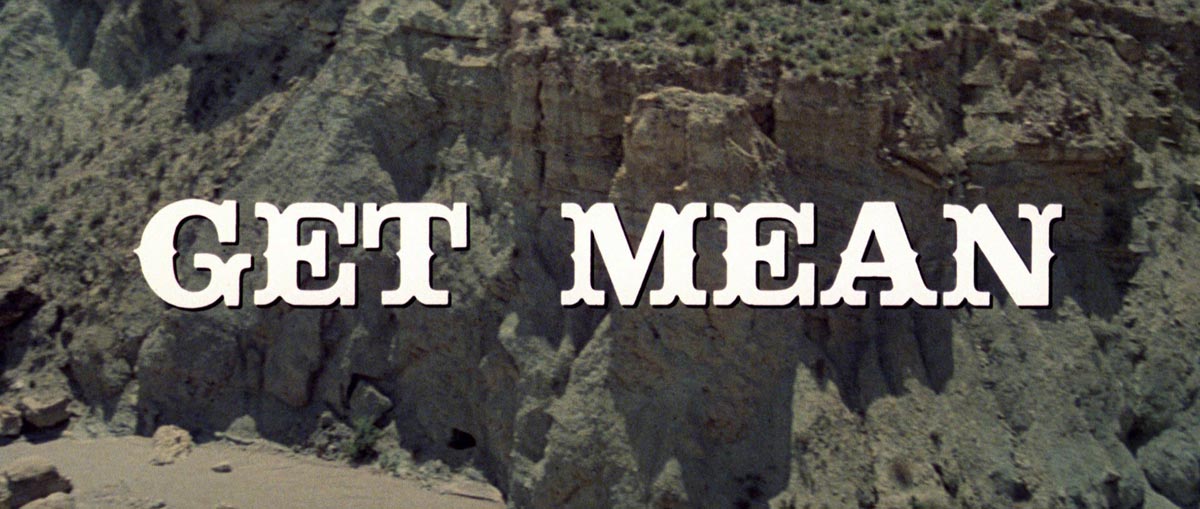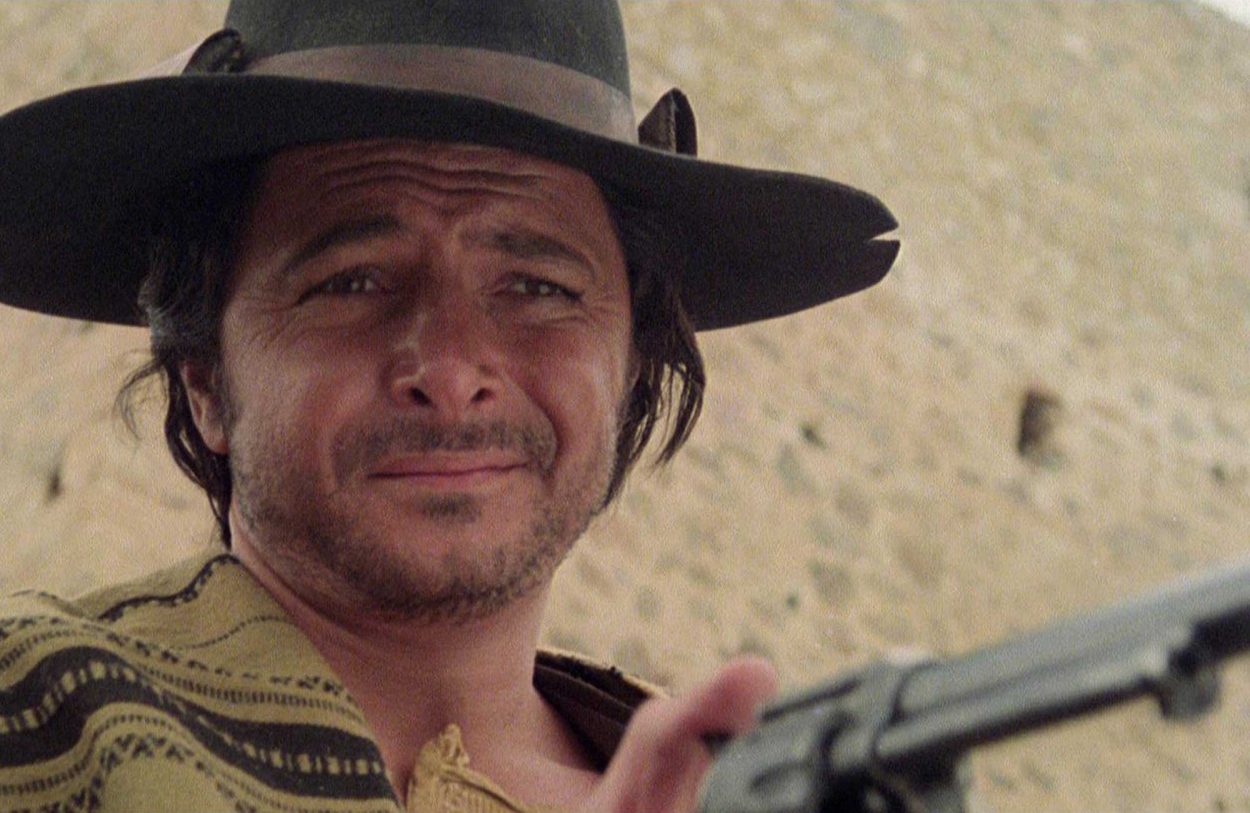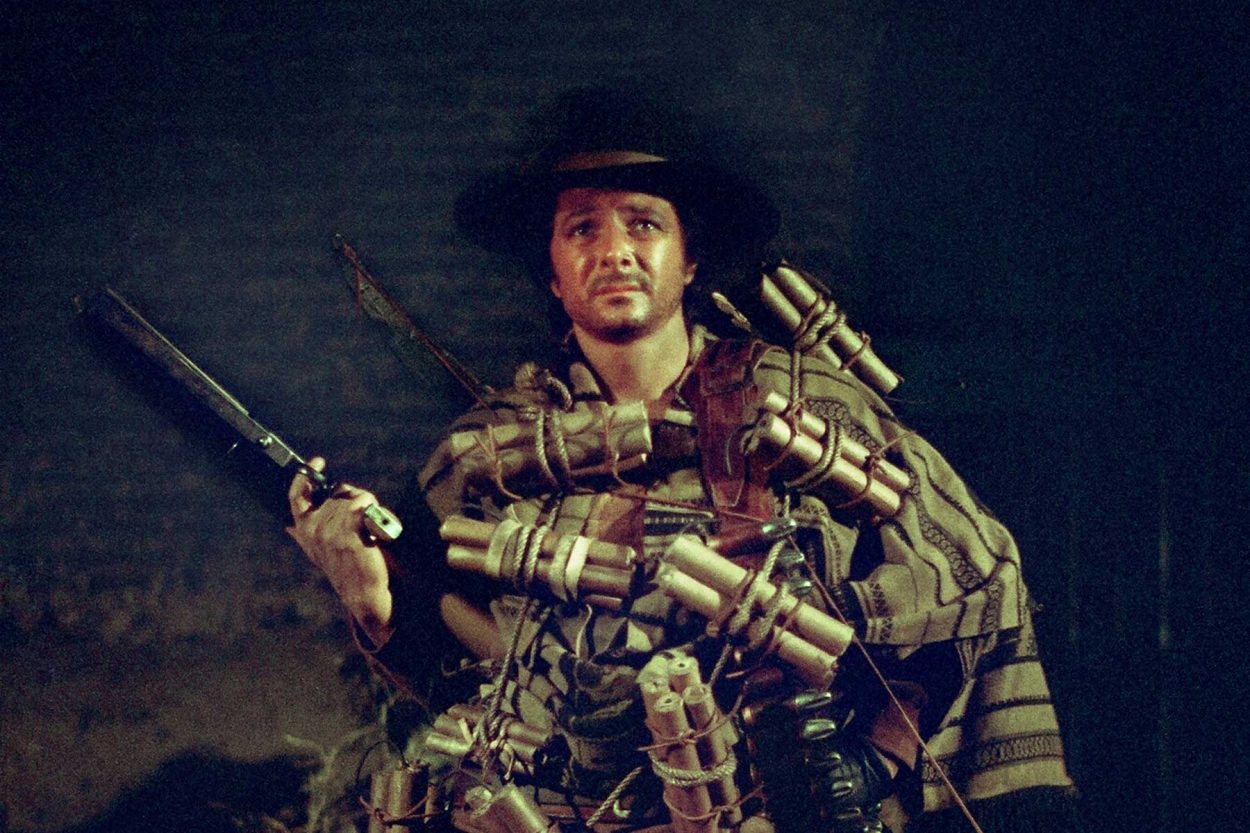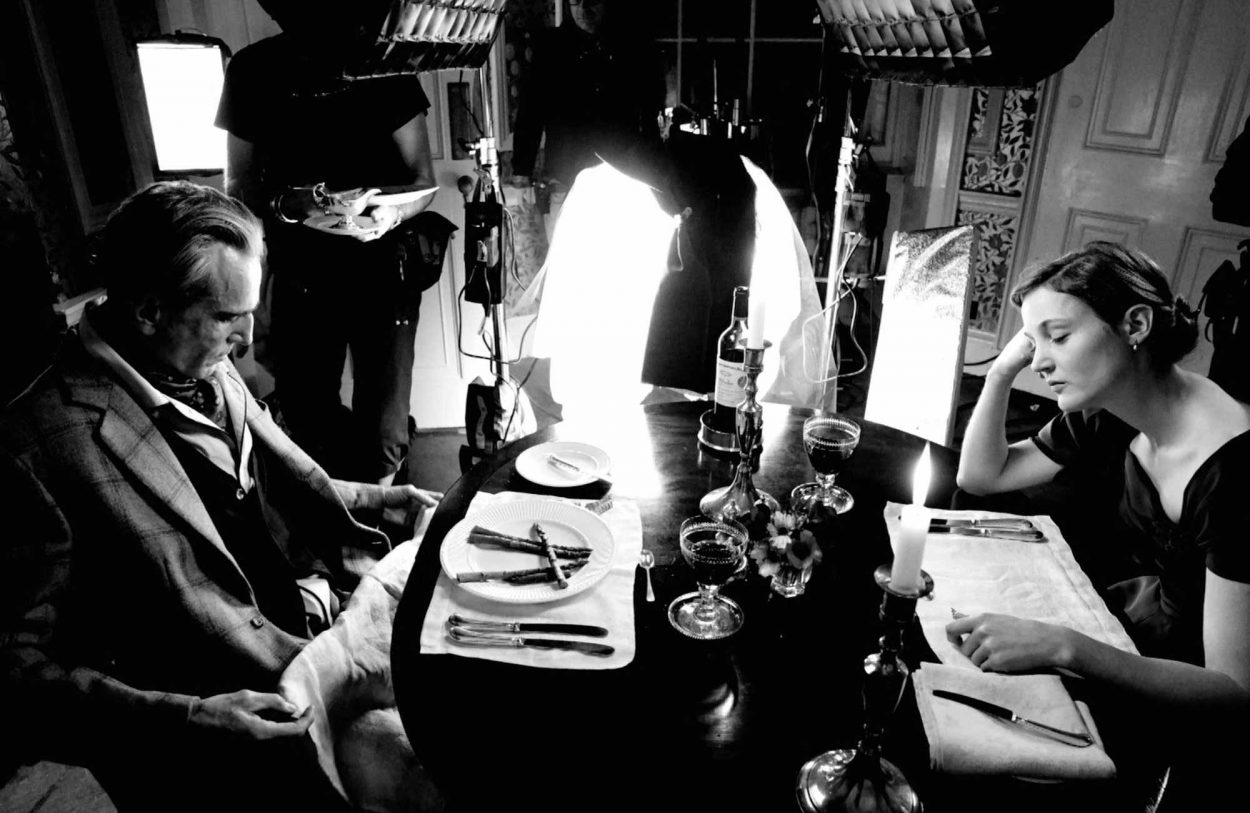As Clint Eastwood was the catalyst that embodied what would make European-made westerns iconic, and Terence Hill was the jester that made them comic, Tony Anthony was the agent provocateur in between. His “The Stranger” trilogy of the late ‘60s slyly subverted the already evolving tropes of the young genre without completely going for the broad ridicule that would follow in the ‘70s. And in Get Mean, his 1975 return to the character, he performed a sort of double turn, presenting an almost completely ridiculous setting to stage the action, but engaging with it in such an energetic and reverential fashion to make audiences pump their fists more often than they’d slap their knees.

Tony Anthony’s route to becoming a notable figure in modern westerns was colorful. The former Roger Petitto of Clarksburg, West Virginia, had a brief dalliance with pop music that did not bring stardom, but did put him in the path of one of music’s most influential and controversial figures, artist manager and media executive Allen Klein. Klein became a patron on a pair of independent films Anthony made with his friend, producer Saul Swimmer, and as the three of them found themselves in Europe pursuing various interests, they all noticed the rising popularity of western films made by Italians and other non-English talents. Anthony had been acting in Italy when he saw A Fistful of Dollars in Rome in 1964, three years before it was given a U.S. release by United Artists. In a 2010 interview for the Zombie Popcorn podcast, he recalled, “[The] Italian spaghetti western was exploding, and I was there to witness that explosion…and I thought to myself, this is something I gotta do. I gotta do one of these to take it back to America…I got lucky, because America didn’t buy [the Leone films] ‘til later…I’m seeing this thing exploding country by country by country, but in America they weren’t sure this kind of picture would work…that turned out to work in my favor.” The actor privately raised start-up capital in 1966 to launch A Dollar Between the Teeth, directed by Luigi “Gigi” Vanzi, and convinced both MGM, who had purchased overseas rights to an earlier Anthony film, Wounds of Hunger, and Klein, a major investor and one-time suitor to purchase the studio, to acquire the project. Vanzi’s vision for Anthony’s persona, as the actor recounted it for writer Joe Leydon, was a direct rebuke to established heroes:
Well, I come along, and I’m like a street guy…[Vanzi’s] walking around the table, and he’s pointing at me, and he says, “You know, you’re not Clint Eastwood…You know you’re not John Wayne…You’re certainly not Gary Cooper. And you can’t even roll a cigarette…You don’t walk down a main street with your gun and shoot the guy on the other side of the street…You wait ‘till it’s night, and then you sneak down the street. And you’re smart – you know how to trick ‘em. And then you kill ‘em all…If you’ll trust me, I believe that with your look – with a few changes – you will appeal to the guy in the street. When they go see these super heroes, they say, ‘I wish I could be like that.’ But I think with you, if I can find the humor, they’ll say, ‘I can be like that.’ But I’ll need your complete trust to make that happen.”
Their film earned back its small budget handsomely across Europe in 1967, and both MGM and Klein quickly greenlit a sequel with star and director returning – A Man, a Horse, a Gun – which was released later that summer. After UA finally released A Fistful of Dollars and For a Few Dollars More in America that year to great success, MGM president Robert O’Brien elected to give the two Anthony films a stateside release in 1968, under the titles A Stranger in Town and The Stranger Returns. The films’ performance in Anthony’s home country exceeded expectations, and a viable worldwide franchise was established.
Anthony’s profile as a Klein client became almost as synonymous as the supermanager’s business dealings with The Beatles and The Rolling Stones. Klein would produce four more films with him, beginning with a third Vanzi-helmed Stranger installment set in Japan, The Silent Stranger, followed by the Zatoichi-influenced western Blindman featuring Ringo Starr and directed by Ferdinando Baldi, then a counterculture road movie Come Together co-directed by Anthony and Saul Swimmer, and the ‘30s crime drama Pete, Pearl, and the Pole with Lionel Stander and Irene Papas, directed by Vanzi. As this was taking place, Klein also took notice of a Chilean surrealist filmmaker, Alejandro Jodorowsky, whose radical spiritualist western El Topo was brought to his attention by John Lennon. It can be argued that Klein’s willingness to align himself with Jodorowsky, and launch a rocky but long-lasting relationship with him and his films, arose from his feelings of pleasure from working with Anthony.
Their relationship with MGM did not work out as well, unfortunately. After production of The Silent Stranger, the studio was acquired by Kirk Kerkorian, who installed infamous former CBS executive James “The Smiling Cobra” Aubrey as studio president, replacing Klein’s ally O’Brien. Klein and MGM filed mutual lawsuits against each other regarding disputes over distribution of Klein’s record labels as well as his Saul Swimmer-produced Herman’s Hermits movie Mrs. Brown You’ve Got a Lovely Daughter, and in retaliation, The Silent Stranger was shelved. In 1975, with over 20 minutes removed and replaced by newly-recorded Anthony narration to fill the story gaps, MGM finally released it. Anthony was chagrined at the circumstance, but it may be fair to say that the unexpected return to the character for looping purposes spurred his desire to give his hero one last proper adventure…
When Anthony set about making another Stranger movie, as what was then mordantly titled Beat a Dead Horse, he faced daunting obstacles. The project was launched at a time when spaghetti westerns were mostly out of favor, before they received a second wind through harder-edged films like Keoma and Mannaja. He would not have the backing of a studio, nor would he have Klein or Swimmer to assist, and Vanzi, who had made all three previous entries, took retirement after making Pete, Pearl, and the Pole. Klein nephew and associate Ronald Schneider, who worked with the Rolling Stones and had producer credits on Mrs. Brown and Gimme Shelter, agreed to produce, and Blindman’s Baldi came back to direct. Anthony began production greatly underfunded, and his Spanish investors seized his passport while his crew threatened to abandon the shoot. At his blog, Schneider described the often dangerous leaps of faith he and Anthony took in keeping the show together:
Tony said that if we began shooting we could take some of the footage and have our foreign sales team sell the pic and get us advances that would help finish the film. The estimates were that advance sales would bring in about $750,000. Reality time – at the very last minute when all would be shut down we got an offer…the $750,000 became $125,000 and I had to scramble to make up the difference…We had run out of money and Tony told me that I had to come to Almeria with $50,000 or else everyone would leave…I managed to get an investor to put up $17,500 cash…I was supposed to have $50,000 and had $17,500 – my only recourse was charm as opposed to crying, so we had a big dinner…because I picked up the check, all were happy and we moved forward to finish the film.

Unfortunately, trouble continued for Anthony even after shooting was completed. Jerry Gross’ Cinemation Industries initially picked up the rights in 1975, but the once-vigorous independent filed for bankruptcy before they could release it. A smaller company, Cee Note, took over distribution and changed the title to Get Mean. However, after an underwhelming theatrical run, Cee Note ceased operation as well, and the Stranger’s finale virtually vanished; until 2015, it had never received a domestic home video release. Moreover, while Anthony was able to stay active through his popular ‘80s 3D adventures Comin’ at Ya and Treasure of the Four Crowns and producing films with friends Mark Damon and Gene Quintano, due to intransigence with Allen Klein and disinterest from MGM, for decades none of the previous Stranger films were available to rewatch on TV or video in many territories, including America.
Despite these complications, the grandiose and ludicrous scope of the production, which involved supernatural villainy along with semi-anachronistic battles between Moors and Vikings, was successfully realized. Modern critics have often compared it to Sam Raimi’s Army of Darkness in its placing of a character established in a standard genre setting into a high-energy mashup of fantasy elements. The Stranger’s persona, described by Vanzi as a bad guy who does good in spite of himself, effectively provides humorous counterpoint to the heightened levels of action without ever undercutting or demeaning the material; like Bruce Campbell’s Ash, he is simultaneously devil-may-care and doofus at once.
With the cultural climate more eager to explore deep-cut filmmaking and post-modern sensibilities, Anthony’s westerns have escaped the bootleg limbo and returned to easy consumer access, and Get Mean in particular has enjoyed the most revival attention in theatres and on home video. For the actor who once sat bewildered as a director told him of all the beloved personas he wasn’t, it is a fine vindication of the fresh one that he helped become.

Arcana:
The U.S. trailer for A Stranger in Town used Detroit rock music legend Bob Seger’s 1967 song “Heavy Music” to punch up the onscreen action. This was likely prompted by Allen Klein, who had recently acquired the Cameo-Parkway record label that had initially released the single.
In a 1969 MGM trade ad in Boxoffice magazine, the studio celebrated that a double-feature package of A Stranger in Town and The Stranger Returns grossed $39,134 at the Fox theatre in Detroit, explicitly noting, “This figure is higher than either film grossed in its initial run at the same theatre.”
Get Mean would again use “Heavy Music” in its U.S. trailer, and its U.S. premiere engagement was again booked at the Fox theatre, as a good luck omen. According to producer Schneider, the film had a strong two-week run, leading to hope that it would break well into the neighboring suburban theatres and drive-ins, and that a major studio would pick it up for a national rollout. However, the distributor found out too late all other Detroit theatre operators had a dispute with Fox ownership, and would not play any films that opened at that venue.
In likely unrelated but no less curious circumstance, after his first breakthrough albums with the Silver Bullet Band, Live Bullet and Night Moves, Bob Seger titled his 1978 followup record Stranger in Town.


